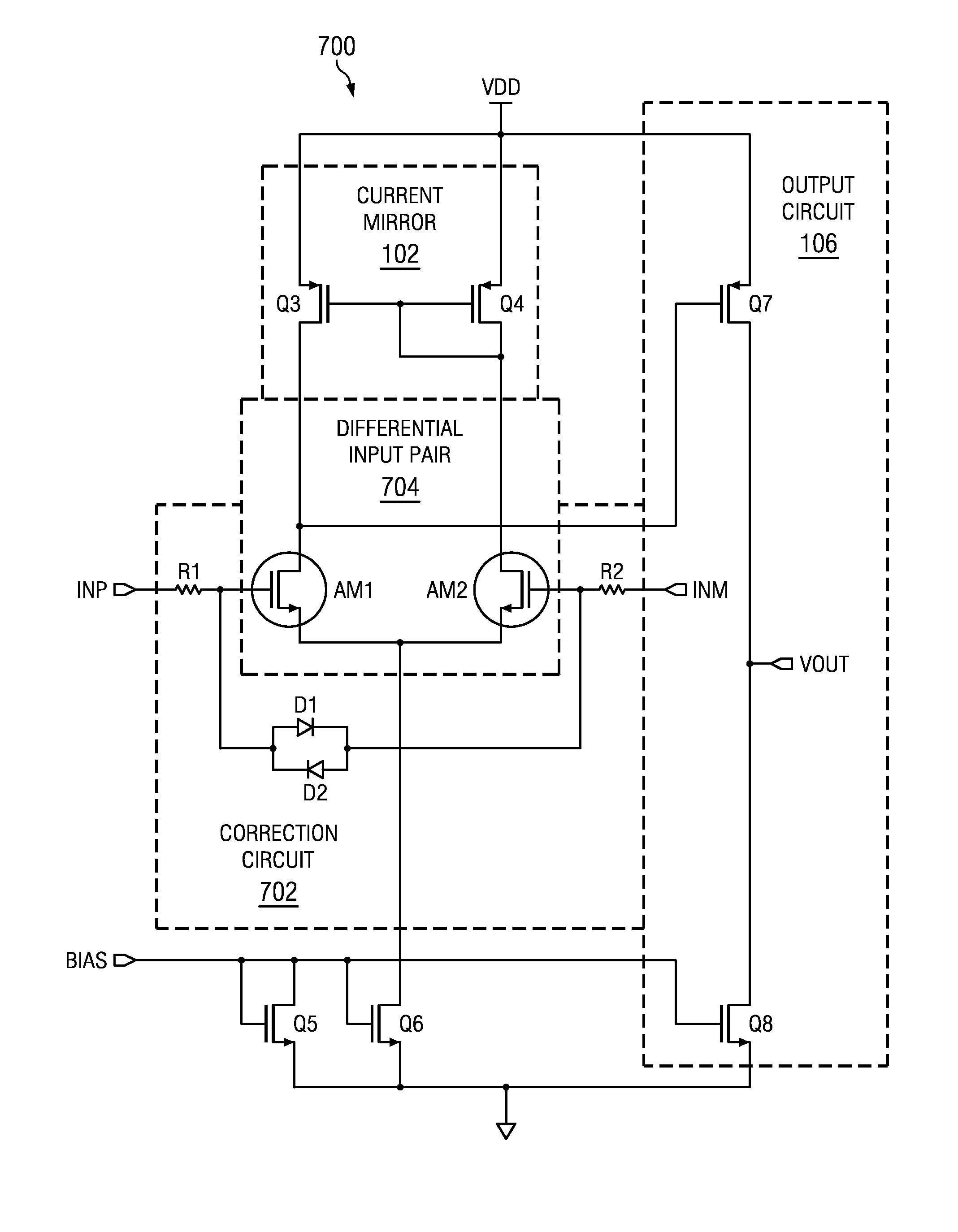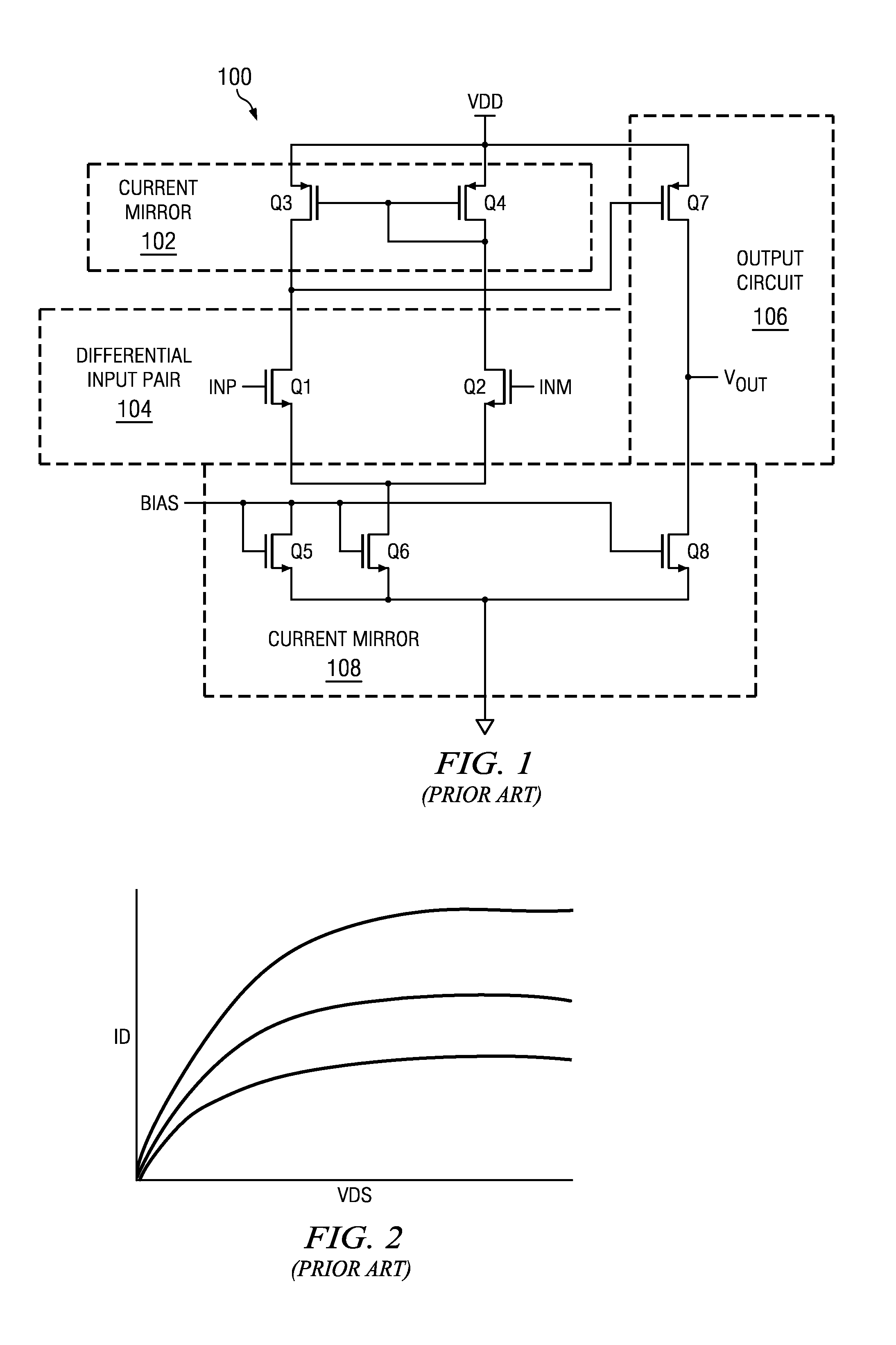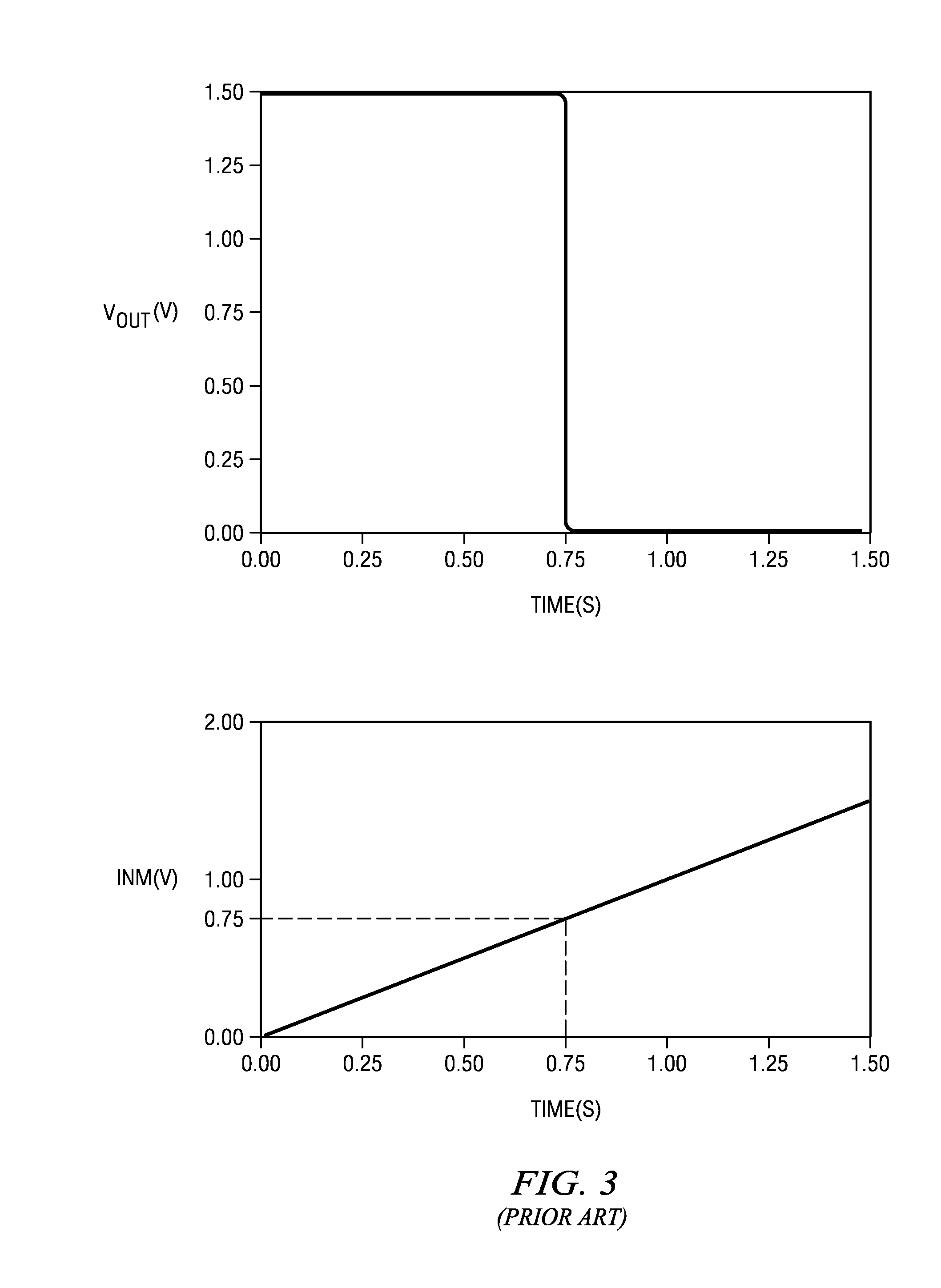Differential input for ambipolar devices
a technology of ambipolar devices and inputs, applied in pulse manipulation, pulse technique, instruments, etc., can solve the problems of interfering with the desired performance of similar circuits, and the development of circuitry for ambipolar transistors (i.e., transistors b>400/b>) having similar behavior to known circuitry in cmos (or bipolar) can be challenging
- Summary
- Abstract
- Description
- Claims
- Application Information
AI Technical Summary
Benefits of technology
Problems solved by technology
Method used
Image
Examples
Embodiment Construction
[0026]Refer now to the drawings wherein depicted elements are, for the sake of clarity, not necessarily shown to scale and wherein like or similar elements are designated by the same reference numeral through the several views.
[0027]Turning to FIG. 6, an example of the general operation for amplifier 100 (where transistors Q1 and Q2 have been replaced by ambipolar transistors) can be seen. For this example, the supply voltage VDD is 1.5V and a voltage of 0.75V is applied as signal INP to the ambipolar transistor that replaces transistor Q1. As the voltage for signal INM is ramped, as shown, the output signal VOUT remains 0V until 0.5V is reached. When signal INM reaches 0.5V, output signal VOUT transitions from 0V to 1.5V. The output signal VOUT then transitions back to 0V when signal INM becomes 0.75V. Thus, an amplifier 100 (where transistors Q1 and Q2 have been replaced by ambipolar transistors) does not behave like an ordinary amplifier (i.e., amplifier 100). This unusual behavi...
PUM
 Login to View More
Login to View More Abstract
Description
Claims
Application Information
 Login to View More
Login to View More - R&D
- Intellectual Property
- Life Sciences
- Materials
- Tech Scout
- Unparalleled Data Quality
- Higher Quality Content
- 60% Fewer Hallucinations
Browse by: Latest US Patents, China's latest patents, Technical Efficacy Thesaurus, Application Domain, Technology Topic, Popular Technical Reports.
© 2025 PatSnap. All rights reserved.Legal|Privacy policy|Modern Slavery Act Transparency Statement|Sitemap|About US| Contact US: help@patsnap.com



